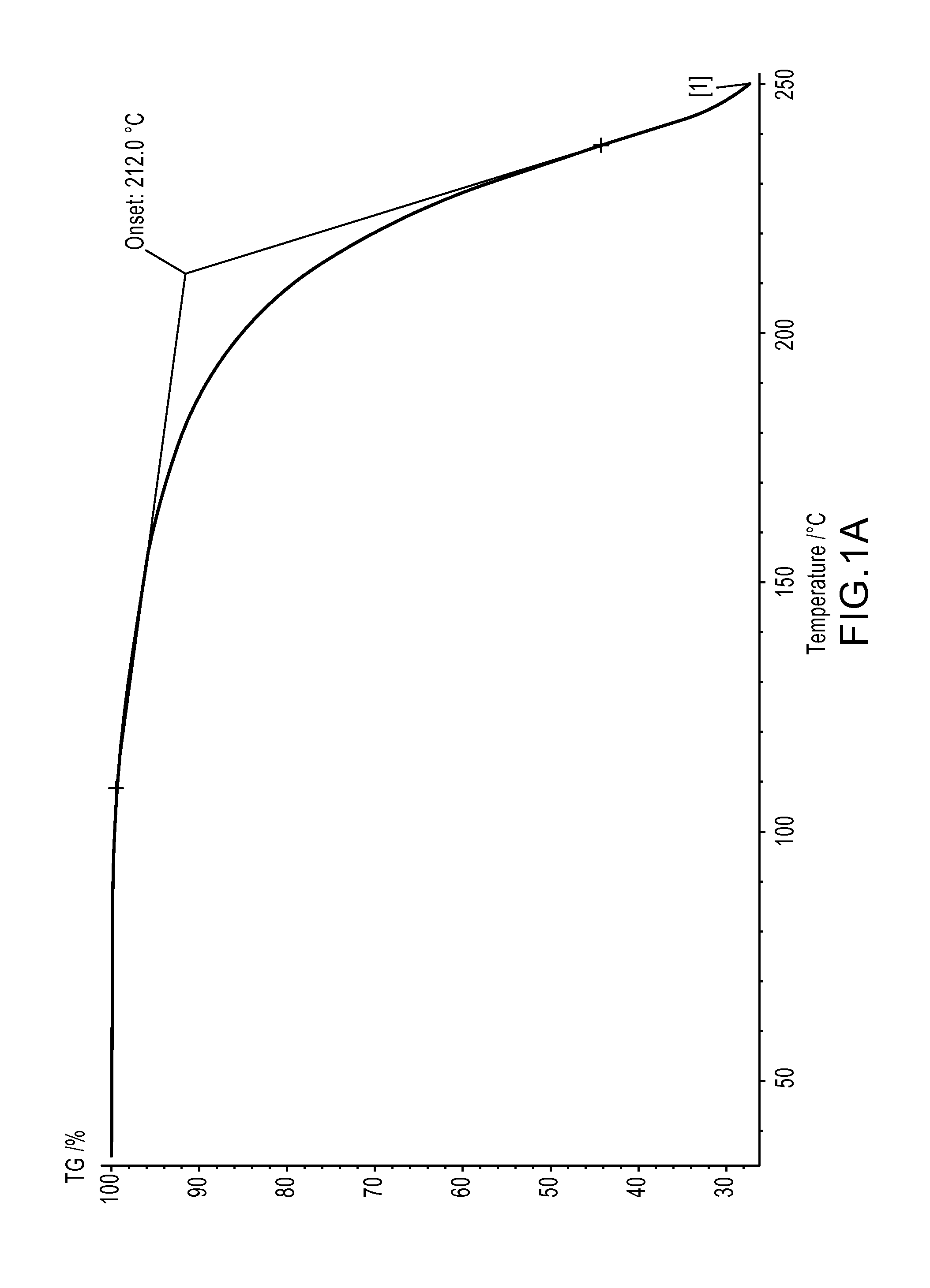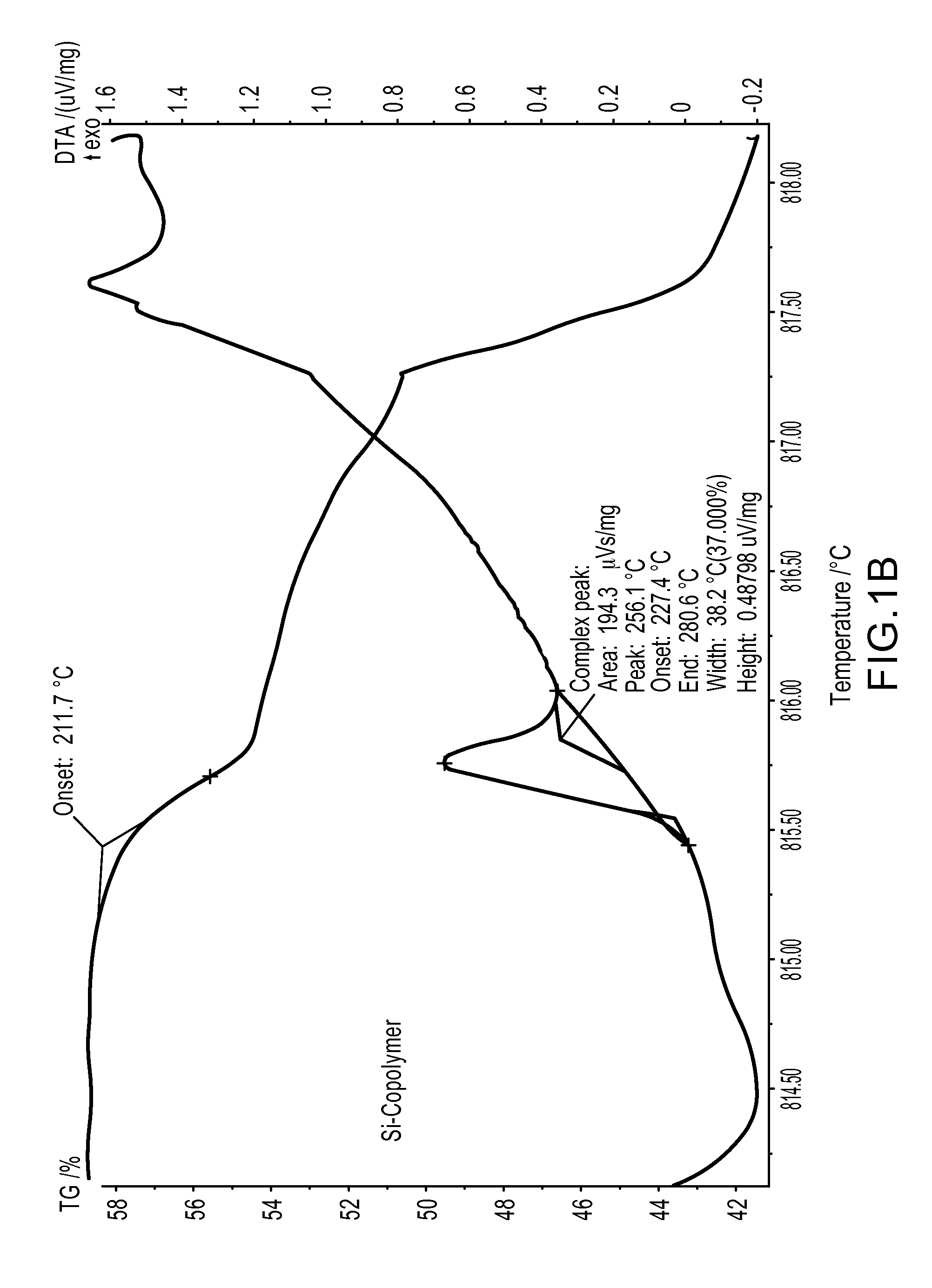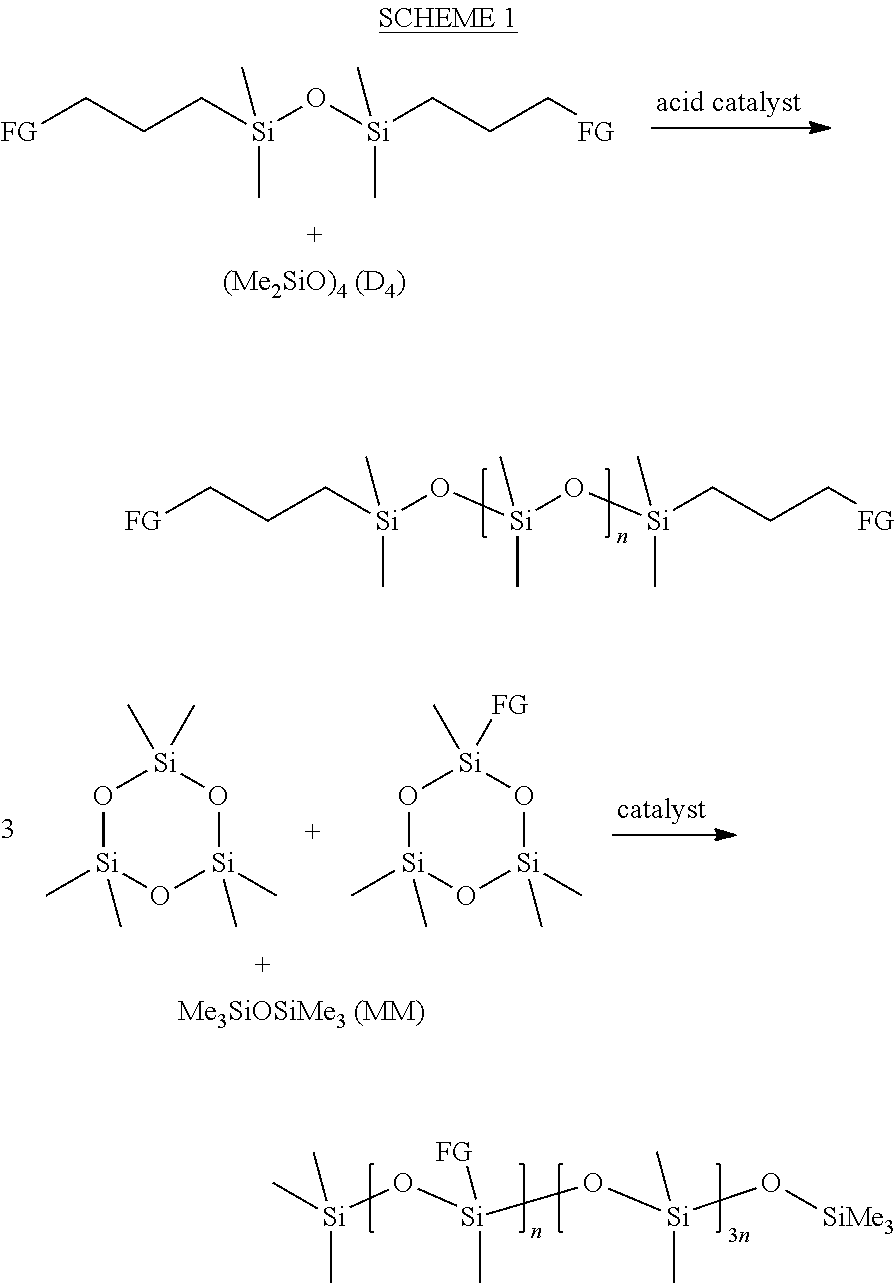Preparation of organosilicon-containing triazoles
a triazole and organosilicon technology, applied in the field of organosilicon compounds, can solve the problems of difficulty in processing elastomers, all three methods of cure suffer from some deficiencies, and it is difficult to synthesize the desired functional group, and achieve the effect of increasing the reactivity of propiolate esters
- Summary
- Abstract
- Description
- Claims
- Application Information
AI Technical Summary
Benefits of technology
Problems solved by technology
Method used
Image
Examples
example 1
[0114]In one example, 1,3-bis(chloropropyl)tetramethyldisiloxane (BCPTMDS) was chosen as the starting material. When treated with an excess of sodium azide in DMF, this approach proved successful and gave 1,3-bis(azidopropyl)tetramethyldisiloxane (BAPTMDS) in a 96% isolated yield (see Scheme 2).
[0115]The reaction was followed by proton NMR, which shows the total disappearance of the triplet at 3.52 ppm (protons in a to chlorine) and their replacement by a triplet at 3.22 ppm (protons a to the azido moiety). It should be noted here that while most azides can be handled without any incident, some members of this class are explosives.32 To establish the thermal stability of the model compound, Thermogravimetric Analysis (TGA) was performed (see FIGS. 1A and 1B). TGA analysis did not reveal any sudden decomposition characteristic of an explosive behavior. Instead, a regular weight loss starting from about 105° C. was observed, despite the presence of 2 azido moieties in the model compou...
example 2
[0117]Polymeric azidoalkylsilicones can also be formed from chloroalkylsilicones.39 Commercially available dimethylsilicone-co-methylchloropropylsilicones were converted, in an analogous manner to that described above, to the polyazide in DMF. The reaction worked very well particularly given the normal challenges of dissolving hydrophilic salts in hydrophobic media such as silicones (see Scheme 3). The product was isolated in a yield of nearly 100%: no residual chloropropyl groups could be observed by 1H NMR. TGA analysis (FIG. 1B) showed that the polyazido compound was even more thermally stable than the BAPTMDS (FIG. 1A), with onset of decomposition at about 125° C. Thus, as confirmed below, these materials will undergo cycloaddition reactions at temperatures well below their decomposition temperatures.
[0118]The polymer of Scheme 3 was obtained by dissolving chloropropyl)methylsiloxane-dimethylsiloxane copolymer (14-16 mole % (chloropropyl)methylsiloxane, 10.0 g) in 40 ml of a mix...
example 3
[0119]The thermal Huisgen cycloaddition reaction of BAPTMDS was carried out at 90° C. with two common, unactivated alkynes, propargyl alcohol and phenylacetylene, respectively. The alkyne was used as both reagent and solvent for the reaction. Both reactions occurred efficiently: Click ligation with propargyl alcohol was complete within only 3 hours, while phenylacetylene required a longer reaction time (ca. 16 to 20 hours). In the two cases, simple removal of the excess alkyne under reduced pressure yielded the Click adduct in quantitative yield (Table 1).
[0120]The reaction was repeated with both alkynes at room temperature and no reaction was evident after 1 day of reaction. Thus, thermally-catalyzed Click ligation was found to be slow / undetectable at low temperature, but efficacious at higher temperatures. Such a reaction profile is ideal for the processing of a silicone elastomer, which could be sold as a two part or one part mixed system that will not cure until exposed to eleva...
PUM
| Property | Measurement | Unit |
|---|---|---|
| temperature | aaaaa | aaaaa |
| temperature | aaaaa | aaaaa |
| hydrophilic | aaaaa | aaaaa |
Abstract
Description
Claims
Application Information
 Login to View More
Login to View More - R&D
- Intellectual Property
- Life Sciences
- Materials
- Tech Scout
- Unparalleled Data Quality
- Higher Quality Content
- 60% Fewer Hallucinations
Browse by: Latest US Patents, China's latest patents, Technical Efficacy Thesaurus, Application Domain, Technology Topic, Popular Technical Reports.
© 2025 PatSnap. All rights reserved.Legal|Privacy policy|Modern Slavery Act Transparency Statement|Sitemap|About US| Contact US: help@patsnap.com



